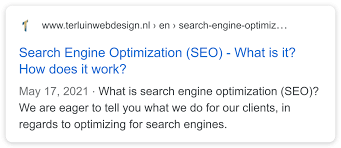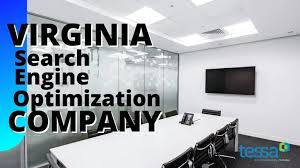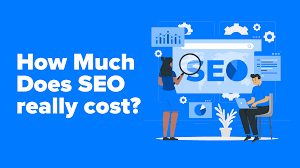The Importance of Search Engine Optimization in Web Design
Search Engine Optimization (SEO) plays a crucial role in the success of any website. When it comes to web design, incorporating SEO best practices is essential for ensuring that your site ranks well in search engine results and attracts organic traffic.
Why is SEO Important in Web Design?
SEO helps search engines understand your website’s content and purpose, making it easier for them to index and rank your pages appropriately. By optimizing your web design for SEO, you can improve your site’s visibility, increase organic traffic, and reach a wider audience.
Key SEO Elements in Web Design
When designing a website with SEO in mind, consider the following key elements:
- Keyword Research: Identify relevant keywords and incorporate them strategically into your website’s content, meta tags, headings, and URLs.
- Mobile-Friendly Design: Ensure that your website is responsive and mobile-friendly to provide a seamless user experience across different devices.
- Page Speed: Optimize your site’s loading speed to enhance user experience and improve search engine rankings.
- Title Tags and Meta Descriptions: Write compelling title tags and meta descriptions that accurately describe each page’s content and encourage users to click through from search results.
- Quality Content: Create high-quality, relevant content that engages users and provides value. Regularly updating your content can also help boost SEO performance.
- Internal Linking: Use internal links to connect related pages within your website and improve navigation for both users and search engines.
The Benefits of Optimizing Web Design for SEO
Incorporating SEO best practices into your web design offers numerous benefits, including:
- Increased Visibility: Higher search engine rankings lead to increased visibility for your website among potential visitors.
- Organic Traffic Growth: By attracting organic traffic through improved search rankings, you can reduce reliance on paid advertising for driving visitors to your site.
- Better User Experience: SEO-friendly web design enhances user experience by making it easier for visitors to find relevant information quickly.
- Easier Website Maintenance: Following SEO best practices from the outset can simplify future updates and optimizations as your site evolves.
In Conclusion
Incorporating Search Engine Optimization into web design is essential for maximizing the visibility, usability, and success of your website. By focusing on key SEO elements during the design process, you can create a site that not only looks great but also performs well in search engine results. Remember that an optimized website is more likely to attract organic traffic and achieve long-term success online.
Top 5 Benefits of SEO Web Design: Boost Visibility, Traffic, and Credibility
- Increased visibility in search engine results
- Higher organic traffic potential
- Improved user experience and site usability
- Enhanced website credibility and trustworthiness
- Long-term cost-effectiveness compared to paid advertising
5 Challenges of SEO Web Design: Time, Complexity, Algorithms, Competition, and Over-Optimization
- 1. Time-Consuming
- 2. Technical Complexity
- 3. Algorithm Changes
- 4. Competitive Landscape
- 5. Over-Optimization Risks
Increased visibility in search engine results
Enhancing web design with search engine optimization techniques leads to a significant benefit of increased visibility in search engine results. By optimizing website elements such as content, meta tags, and structure for SEO, businesses can improve their rankings on search engine results pages. This increased visibility ensures that the website is more easily discovered by users searching for relevant information or services, ultimately driving more organic traffic to the site and expanding its online reach.
Higher organic traffic potential
One significant advantage of incorporating search engine optimization into web design is the higher potential for organic traffic. By optimizing a website for SEO, businesses can improve their visibility in search engine results, making it easier for users to discover their site when searching for relevant keywords or topics. This increased visibility can lead to a boost in organic traffic, as more users are likely to click on the website link displayed on search engine results pages. Ultimately, higher organic traffic potential can result in greater exposure, increased brand awareness, and more opportunities for engagement and conversions.
Improved user experience and site usability
By incorporating Search Engine Optimization (SEO) into web design, one significant benefit is the enhancement of user experience and site usability. SEO-driven web design focuses on creating a website structure that is easy to navigate, loads quickly, and provides relevant and valuable content to users. By optimizing for SEO, websites can offer a seamless and enjoyable browsing experience for visitors, leading to increased engagement, longer time spent on the site, and higher chances of conversion. Ultimately, improved user experience and site usability contribute to building trust with users and establishing a strong online presence.
Enhanced website credibility and trustworthiness
By incorporating search engine optimization into web design, businesses can enhance their website’s credibility and trustworthiness. When a website ranks high in search engine results due to effective SEO practices, it signals to users that the site is relevant, reliable, and authoritative in its industry. This boost in credibility not only increases user trust but also helps establish a positive reputation for the brand online. A well-optimized website that appears prominently in search results is more likely to attract visitors who perceive it as a trustworthy source of information or products, ultimately leading to improved user engagement and conversions.
Long-term cost-effectiveness compared to paid advertising
One significant advantage of incorporating search engine optimization into web design is its long-term cost-effectiveness when compared to paid advertising. While paid advertising campaigns require ongoing investment to maintain visibility and attract traffic, SEO-focused web design efforts can yield sustainable results over time without the need for continuous financial input. By optimizing a website for search engines, businesses can establish a strong online presence that consistently attracts organic traffic and reduces reliance on costly advertising methods, ultimately leading to long-term savings and a higher return on investment.
1. Time-Consuming
Implementing SEO strategies in web design can be time-consuming, as it involves conducting thorough research, analyzing data, and continuously optimizing various elements of the website to align with search engine algorithms. From keyword research to on-page optimization and monitoring performance metrics, the process demands a significant investment of time and effort. Balancing the need for SEO with other aspects of web design can be challenging, but prioritizing these strategies is crucial for long-term success in attracting organic traffic and improving search engine rankings.
2. Technical Complexity
One significant drawback of incorporating search engine optimization into web design is the technical complexity involved. SEO encompasses various technical elements, including meta tags, schema markup, and site speed optimization, all of which demand a certain level of expertise to implement effectively. Navigating these technical aspects can be challenging for those without a deep understanding of SEO practices, potentially leading to suboptimal results or even detrimental effects on website performance if not executed correctly.
3. Algorithm Changes
One significant drawback of incorporating search engine optimization into web design is the constant evolution of search engine algorithms. These algorithms undergo frequent changes, making it a daunting task for website owners and designers to stay abreast of the latest SEO trends and updates. The challenge lies in adapting to these algorithm changes to ensure that the website remains optimized for search engines and maintains its visibility in search results. Keeping up with these dynamic shifts in algorithms requires continuous monitoring, learning, and adjustment, adding complexity to the SEO process and potentially impacting the website’s performance.
4. Competitive Landscape
In the realm of search engine optimization web design, one significant drawback is the competitive landscape that websites face. With numerous online platforms competing for top search rankings, the process of achieving and sustaining a high position can be intensely competitive and demanding. Websites must constantly adapt and optimize their SEO strategies to stay ahead in the crowded digital space, making it a challenging task to secure prominent visibility and attract organic traffic amidst fierce competition.
5. Over-Optimization Risks
One significant drawback of search engine optimization in web design is the risk of over-optimization. When website owners engage in excessive optimization tactics, they run the danger of triggering penalties from search engines. These penalties can have detrimental effects on the website’s ranking and visibility, ultimately undermining the intended goal of improving search engine performance. It is crucial for web designers and marketers to strike a balance between optimization efforts and avoiding over-optimization to maintain a healthy online presence.




